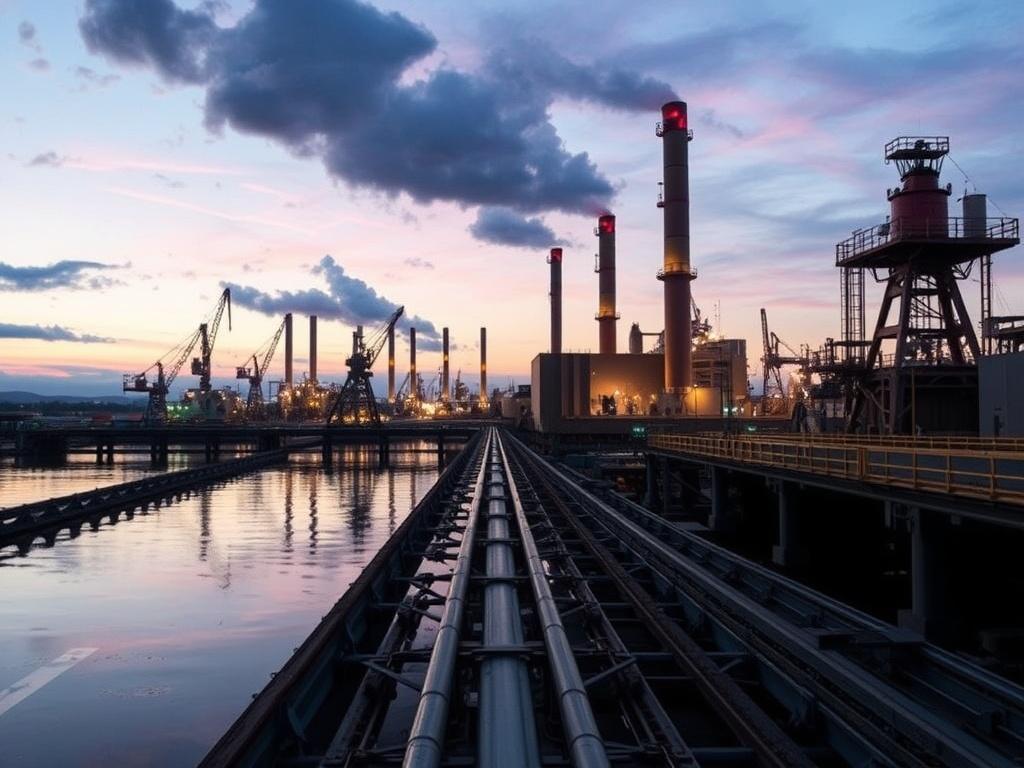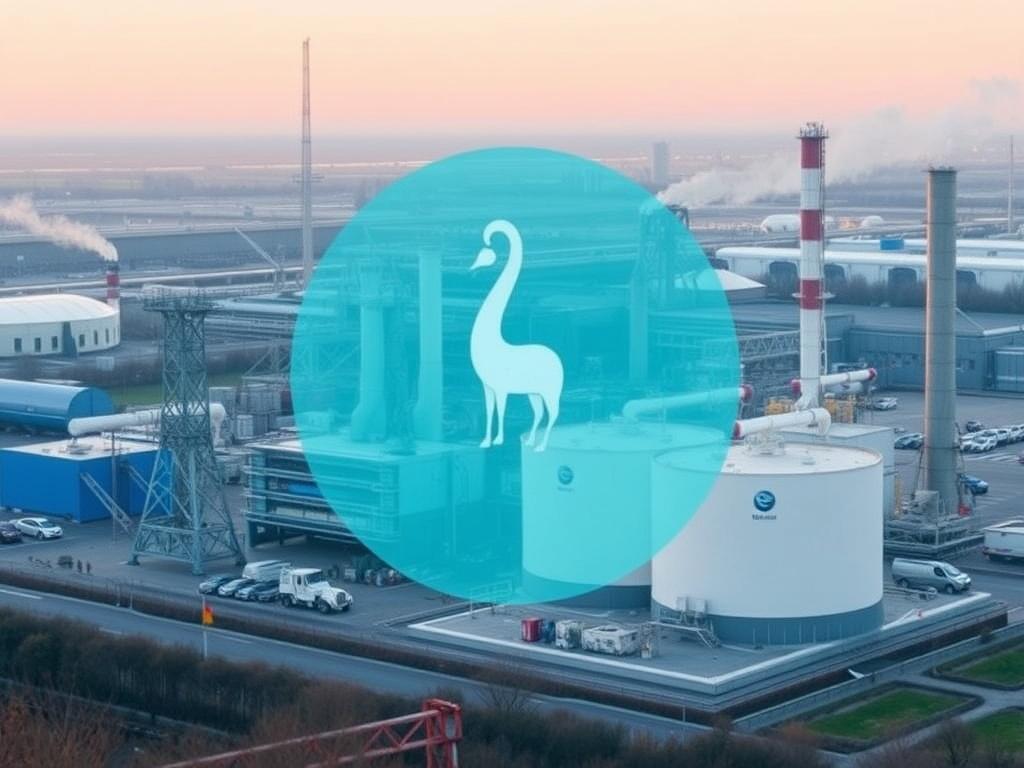- Understanding Heavy Industry and Its Carbon Footprint
- Hydrogen Basics: What Makes it Special?
- The Role of Hydrogen in Steel Production
- Challenges and Opportunities in Hydrogen Steelmaking
- The Influence of Hydrogen in Cement Production
- Potential Pitfalls in Hydrogen Cement Use
- Hydrogen’s Impact on Chemical and Refining Industries
- Infrastructure and Policy: Building the Hydrogen Economy
- Global Initiatives Driving Hydrogen for Heavy Industry
- Economic Considerations: Can Hydrogen Compete?
- Benefits Beyond Emissions Reductions
- Conclusion
Heavy industry has long been the backbone of modern civilization, powering economies and building infrastructures. However, it is also one of the largest contributors to carbon emissions worldwide. As the world faces urgent climate challenges, decarbonizing heavy industry has become an essential goal. One of the most promising solutions that has captured attention is hydrogen. But how exactly could hydrogen decarbonize heavy industry? Let’s dive deep into the topic and explore how this clean energy source could revolutionize the industrial sector.
Understanding Heavy Industry and Its Carbon Footprint

Heavy industry encompasses sectors like steel manufacturing, cement production, chemical processing, and refining. These industries are energy-intensive and typically rely on fossil fuels such as coal, natural gas, and oil for process heat and power. Unfortunately, this dependence leads to significant carbon dioxide (CO2) emissions.
To put things into perspective, heavy industry accounts for nearly 30% of global CO2 emissions. Steel and cement production alone contribute roughly half of that share because their chemical processes inherently emit CO2. The challenge is not only to switch to cleaner energy but also to find alternatives that can meet the high temperature and reliability demands of these industries. This is why hydrogen is often touted as a game-changer.
Hydrogen Basics: What Makes it Special?
Hydrogen is the most abundant element in the universe and an incredibly versatile energy carrier. When used as a fuel, hydrogen can produce energy without emitting CO2, releasing only water vapor as a byproduct. There are different ways to produce hydrogen, which impacts how green or clean the fuel is.
Here’s a quick overview of hydrogen production methods:
| Hydrogen Type | Production Method | Environmental Impact |
|---|---|---|
| Grey Hydrogen | Steam methane reforming from natural gas | High CO2 emissions |
| Blue Hydrogen | Steam methane reforming plus carbon capture and storage (CCS) | Lower CO2 emissions (partial capture) |
| Green Hydrogen | Electrolysis powered by renewable energy | Near-zero emissions |
Green hydrogen, produced through electrolysis powered by solar, wind, or hydropower, holds the key to decarbonizing heavy industry. Unlike grey hydrogen, it doesn’t rely on fossil fuels, making it a truly sustainable energy source for industrial applications.
The Role of Hydrogen in Steel Production
Steel manufacturing is crucial but highly carbon-intensive. Traditional steelmaking uses coking coal to reduce iron ore into metallic iron, releasing large amounts of CO2. Hydrogen could replace coal in this process, potentially transforming the industry.
The technology involved is called direct reduced iron (DRI) using hydrogen as a reducing agent. Instead of carbon monoxide stripping oxygen atoms from iron ore, hydrogen reacts to produce water vapor, drastically reducing carbon emissions.
Several pilot projects across Europe and Asia are demonstrating the feasibility of hydrogen-based steelmaking. For instance, Sweden’s HYBRIT initiative aims to produce fossil-free steel by 2035. This approach could slash CO2 emissions in steel production by up to 90%, making it a vital step in heavy industry decarbonization.
Challenges and Opportunities in Hydrogen Steelmaking
Though promising, hydrogen steel production faces some hurdles:
- Hydrogen Supply: Large-scale green hydrogen production is still in its infancy and costly.
- Infrastructure Needs: Retooling factories and pipelines to handle hydrogen safely requires significant investment.
- Energy Efficiency: Electrolysis and hydrogen compression consume energy, so renewable supply must be abundant.
Despite these challenges, the opportunity to revolutionize an industry responsible for about 7-9% of global emissions is too significant to ignore. Public and private investments are accelerating the development of hydrogen steelmaking technologies.
The Influence of Hydrogen in Cement Production
Cement production is another heavy industry tasking with its own carbon quandary. Emissions come not only from fuel combustion but also from the calcination process, where limestone is chemically decomposed, releasing CO2.
Hydrogen can contribute to decarbonizing cement in these ways:
- Replacing fossil fuels: Hydrogen can serve as a high-temperature heat source for kilns.
- Combined with CCS: Hydrogen fuel combined with carbon capture could reduce net emissions.
- Electrification and alternative binders: Hydrogen enables auxiliary technologies that reduce process emissions.
Switching to hydrogen-powered kilns could help factories meet strict environmental regulations and reduce reliance on coal and natural gas.
Potential Pitfalls in Hydrogen Cement Use
While hydrogen’s high flame temperatures make it theoretically ideal, current cement plants were not designed for hydrogen fuel. Flame characteristics differ from traditional fuels, sometimes affecting product quality. Overcoming these issues will require experimentation and innovation.
Hydrogen’s Impact on Chemical and Refining Industries
The chemical sector extensively uses hydrogen as a feedstock and energy source. Today, much of the hydrogen used in refining and chemicals is grey hydrogen, derived from natural gas, which contributes to emissions.
The pathway to decarbonization here lies in replacing grey hydrogen with green hydrogen:
| Sector | Current Hydrogen Use | Decarbonization Potential |
|---|---|---|
| Oil Refining | Desulfurization and cracking processes | Switching to green hydrogen can reduce emissions significantly |
| Ammonia and Fertilizer Production | Production of ammonia from natural gas | Green hydrogen enables low-carbon ammonia, reducing agriculture emissions |
| Petrochemicals | Feedstock for various chemicals | Green hydrogen can clean up production processes |
The refining industry’s hydrogen demand offers an immediate opportunity for hydrogen deployment. Producing clean hydrogen for these sectors can create a ripple effect, pushing demand and accelerating investments into green hydrogen infrastructure.
Infrastructure and Policy: Building the Hydrogen Economy
For hydrogen to effectively decarbonize heavy industry, a robust infrastructure must be in place. This includes:
- Production facilities: Electrolysers powered by renewables to produce green hydrogen.
- Storage solutions: Safely storing hydrogen at scale, often in underground caverns or compressed tanks.
- Transportation networks: Pipelines, trucking, or shipping routes tailored for hydrogen delivery.
- Industrial adaptation: Retrofitting or building new plants ready to use hydrogen as fuel or feedstock.
Government policies play a decisive role by providing incentives, subsidies, and regulatory frameworks that stimulate private sector investments. Examples include carbon pricing, renewable energy targets, and dedicated hydrogen strategies seen in the European Union, Japan, South Korea, and parts of the United States.
Global Initiatives Driving Hydrogen for Heavy Industry
Some of the prominent global initiatives accelerating hydrogen adoption in industry are:
- European Hydrogen Strategy: Aiming to install at least 6 GW of renewable hydrogen electrolyzers by 2024 and 40 GW by 2030.
- Japan’s Basic Hydrogen Strategy: Focused on creating a hydrogen society with large-scale adoption in industry and mobility.
- Clean Hydrogen Partnerships: Public-private collaborations funding research and scaling-green hydrogen technologies.
These plans are crucial in setting the stage for hydrogen to decarbonize heavy industry on a meaningful scale.
Economic Considerations: Can Hydrogen Compete?
The cost of green hydrogen has been a major barrier to its widespread use. Currently, producing hydrogen via electrolysis is more expensive than producing grey hydrogen. However, prices are falling as renewable energy costs decrease and electrolyzer technologies improve.
Here is a comparison of the estimated levelized cost of hydrogen production (USD/kg) by type:
| Hydrogen Type | Current Cost Range (USD/kg) | Projected Cost by 2030 (USD/kg) |
|---|---|---|
| Grey Hydrogen | 1 – 2 | 1 – 1.5 |
| Blue Hydrogen | 1.5 – 3 | 1 – 2 |
| Green Hydrogen | 3 – 6 | 1.5 – 3 |
As hydrogen becomes cost-competitive, industries will have greater incentives to switch. Additionally, factoring in the costs of carbon emissions or future carbon taxes makes green hydrogen even more financially attractive.
Benefits Beyond Emissions Reductions
Using hydrogen to decarbonize heavy industry is not just about cutting emissions. It also offers:
- Energy security: Reducing dependence on fossil fuel imports.
- Job creation: New industries around hydrogen production, storage, and distribution.
- Technological innovation: Advancements that could spill over to other sectors.
Therefore, hydrogen’s role in heavy industry can help rebuild industrial competitiveness in a low-carbon future.
Conclusion
Hydrogen holds remarkable potential to decarbonize heavy industry, an essential step toward achieving global climate goals. Its versatility as a clean fuel and feedstock, particularly in steel, cement, chemical, and refining sectors, offers a pathway to drastically reduce emissions. While challenges remain—such as infrastructure development, cost reduction, and industrial retrofitting—ongoing technological advances and strong policy support make hydrogen a promising solution. As renewable energy expands and the hydrogen economy scales, replacing fossil fuels with green hydrogen in heavy industry could transform how we produce the materials integral to our everyday lives, all while protecting the planet for future generations. The journey to a low-carbon industrial future is complex but achievable, and hydrogen stands at its forefront.
Как вам статья?







